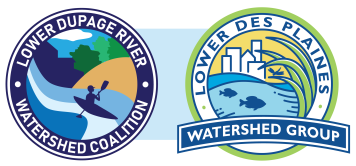Water is one of the most miraculous substances on our planet. All life is dependent upon it, and in the United States, people expect clean water on demand every single day. We use an average of around 80 gallons of water a day for home use. You might think that on a planet as big and blue as ours, that there is plenty of water, but looks can be deceiving.

Breaking Down Our Water Sources
About 70% of the Earth’s surface is covered in water, but 97% of that water is sea water. This water is too salty for most everyday activities like drinking, washing, and watering plants. Ocean water can be desalinated for drinking, but that process requires massive amounts of energy, is very expensive, and leaves behind a super concentrated brine that is toxic to most life.
This leaves 3% of the Earth’s water as “fresh” water. Of that 3%, 69% of that water is locked away in the ice caps of the Arctic, Greenland, and Antarctica as well as glaciers atop mountain ranges. The ice caps are inaccessible to us. As the Earth warms and the ice sheets melt, they also melt straight into the ocean, becoming too salty to use. Glacier water is only accessible during summer melt, but this supply dwindles as the glaciers recede. Eventually, glaciers will disappear entirely, eliminating another freshwater source.
Very Little of the Earth’s Water is Accessible Fresh Water
We are now looking at 31% of all fresh water, which is 0.5% of all water on Earth. Of this tiny remainder, 97% is groundwater. It is accessible but must be pumped out of the ground. Currently, we are pumping groundwater faster than it refills and will deplete most groundwater reserves within our children’s lifetime.
The last couple percent of fresh water (less than 0.05% of all water on Earth) is divided up among several sources. 69% is ground ice and permafrost (also inaccessible for normal use), the atmosphere contains 3% (inaccessible for normal use), soil moisture contains another 2.6% (inaccessible for normal use), swamps and marshes have 2.6% (a poor option for sourcing water, though doable), and the final 21% in lakes and 0.5% in rivers.
Most of our water used for drinking and household needs comes from rivers and lakes. Globally, rivers and lakes contain about 0.006% of the world’s total water. This really puts into perspective how precious every single drop truly is. In a world with so little clean water, conservation is of the utmost importance.

It is also important to note that water is not distributed evenly across the world. Many places, like the Great Lakes region, enjoy a high amount of water privilege. The quality and quantity of our drinking water is high, and we rarely worry about water shortages. However, the Southwestern States have a dramatically different situation, where shortages, droughts, and disputes over water rights are common. In many states, it is illegal to install a rain barrel like we do here, because the water that runs off your roof is considered the property of someone else downstream. Even in places as close to home as Joliet, water shortages are already on the horizon.
Conserving Water at Home
With water as precious as it is, supplies in decline, and demands on the rise, water conservation is a critical part of responsible management. Each of us can do something in our everyday lives to conserve our freshwater supply. Consider these 10 water-saving tips:
- Water your lawn and garden in the early morning or evening. When we water mid-day, more of the water is likely to evaporate.
- Check to make sure your sprinklers are positioned into your lawn. You don’t want to lose water to the sidewalk or road!
- Mulch your landscaping to hold in moisture.
- Landscape with native trees, grasses, and flowers that need less water.
- Collect rainwater in a rain barrel and use it to water your garden.
- Routinely check for leaking faucets, pipes, and outdoor spigots.
- Monitor your water bill for any irregular water usage—that may be a sign you have a leak!
- Upgrade to water efficient appliances, showerheads, and faucet aerators.
- Instead of rinsing food scraps off plates, scrape off any food scraps into the trash.
- Use your dishwasher—it’s more water efficient than handwashing—and only run it when the dishwasher is full.




